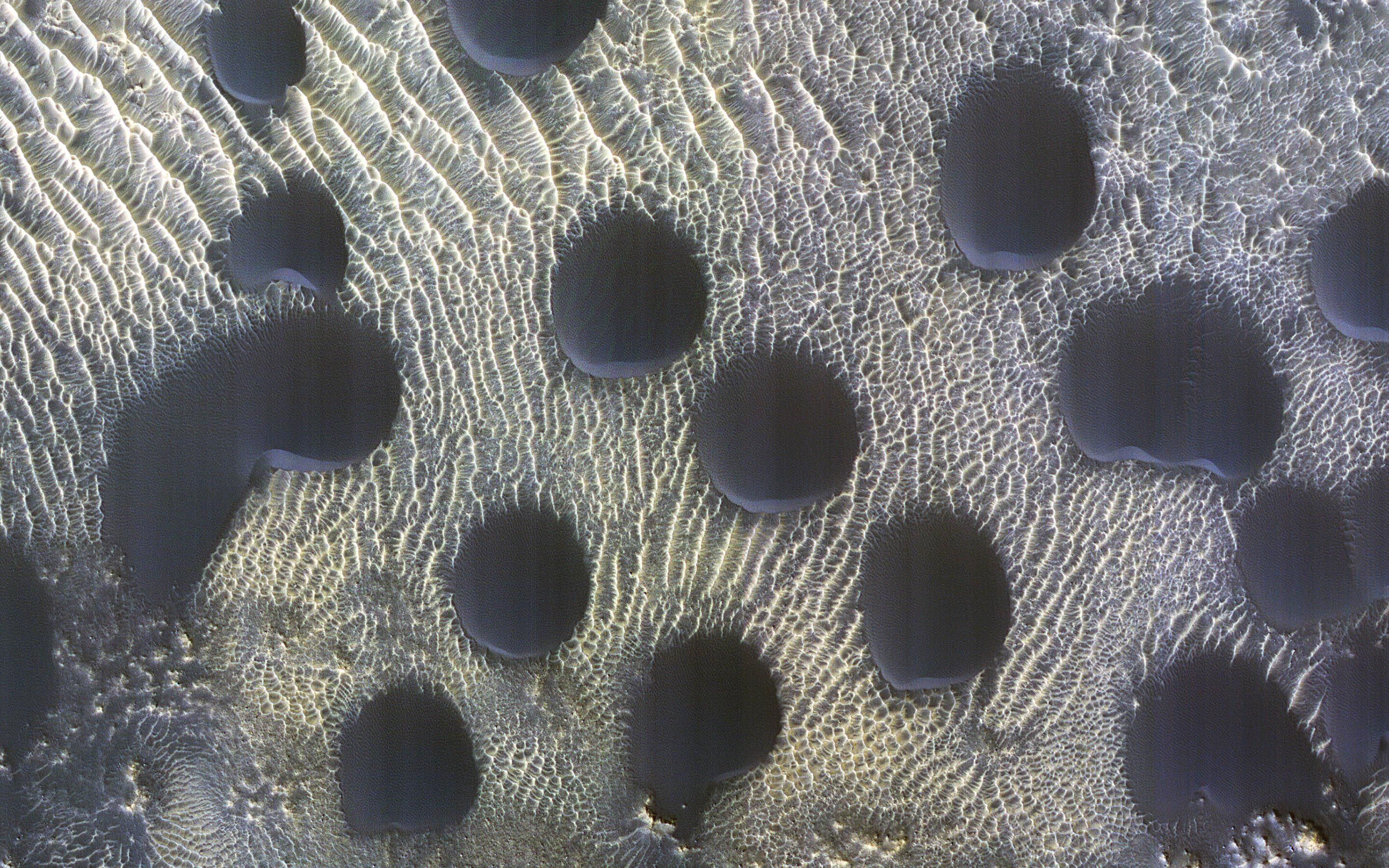
NASA's Curious Discovery of Circular Dunes on Mars
NASA's Mars Reconnaissance Orbiter (MRO) has recently captured images of strange circular dunes on the red planet. These dunes, found in the planet's northern hemisphere, are unlike any other seen on Mars or on Earth. The discovery has sparked curiosity and excitement among scientists and space enthusiasts alike, as they attempt to unravel the mysteries behind these peculiar formations.
What are Circular Dunes?
Dunes are formed by the wind's movement of loose sediment, such as sand, in a particular direction. They are commonly seen on Mars, but the circular dunes are unique in their structure. The circular dunes found on Mars are much larger than those found on Earth, with diameters ranging from a few hundred meters to several kilometers.
NASA's Discovery of Circular Dunes on Mars
NASA's Mars Reconnaissance Orbiter has been orbiting Mars since 2006 and has captured numerous images of the planet's surface. However, it was during a routine survey in 2019 that the spacecraft captured the images of the circular dunes.
Also Read:
The images show several circular dunes, some of which are surrounded by a ring of sand that appears to have been pushed outwards. These rings have led scientists to believe that the dunes may have been formed by a combination of wind and ice.
What Could Have Caused the Circular Dunes on Mars?
The circular dunes on Mars are unique, and scientists are still trying to figure out how they were formed. One theory is that the dunes were formed by the movement of strong winds on the planet's surface, which created circular patterns in the sand. Another theory is that the dunes were formed by ice sublimation, a process by which solid ice changes directly into a gas, leaving behind circular patterns in the sand.
However, scientists believe that the most likely explanation for the formation of the circular dunes is a combination of wind and ice. The ice sublimation theory suggests that as the ice evaporates, it creates pockets of air that are then filled with sand, forming the circular dunes. The strong winds on Mars then blow the sand into a circular pattern, creating the distinctive rings that surround the dunes.
What Can the Circular Dunes Tell Us About Mars?
The discovery of circular dunes on Mars has provided scientists with new insights into the planet's geological and environmental history. The presence of ice on the planet's surface suggests that Mars may have had a different climate in the past, possibly supporting life.
In addition, the circular dunes may help scientists understand the planet's current climate and weather patterns. By studying the formation of the dunes and the patterns of the wind that created them, scientists can gain a better understanding of the planet's atmospheric dynamics.
Conclusion
The discovery of circular dunes on Mars is a fascinating development that has captured the attention of scientists and space enthusiasts alike. While the origin of these formations is still unknown, they provide valuable insights into the geological and environmental history of the red planet. Further research into the circular dunes on Mars may help us understand more about the planet's climate, weather patterns, and potential for supporting life.
Read More:
That's it for this article.
Thanks for Visiting Us – fixyanet.com


0 Comments